GRAFT - positively revolutionizing the payment processing industry
Introduction:
If you ever feel that cryptocurrencies should be adopted in every sector of our modern economy, then come with me, let’s take a look at GRAFT.

GRAFT:
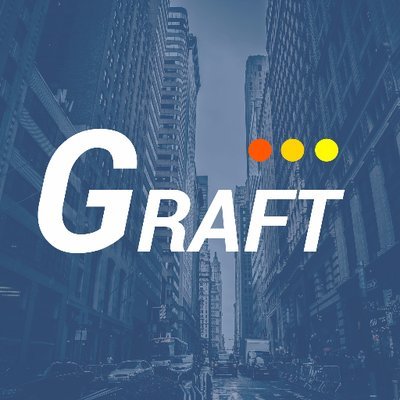
GRAFT stands for Global Real-Time Authorization and Funds Transfer. GRAFT is payment gateway and processing platform.
GRAFT is not just a regular payment gateway and processing platform, GRAFT is global, open-source, and built on the blockchain. An interesting aspect of GRAFT is that GRAFT uses the same payment processing protocols and flows used by traditional electronic payment systems such as credit, debit and prepaid cards – which are already familiar, used and trusted by millions of users, buyers and/or merchants. However GRAFT does this is a decentralized and inexpensive manner.
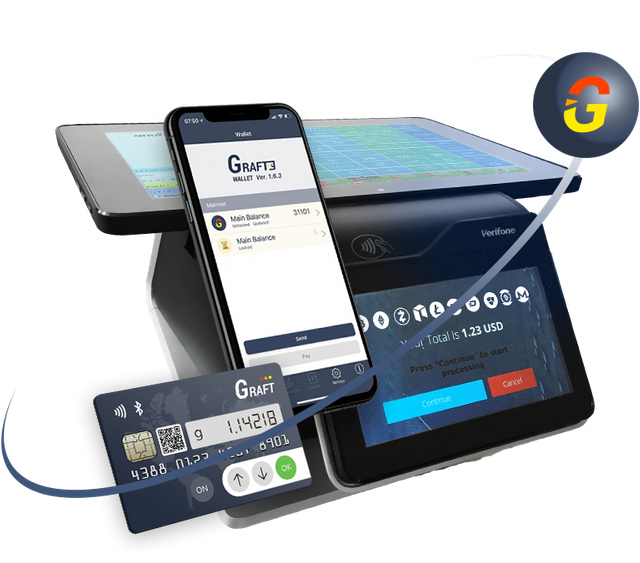
Now, I bet y’all are as excited as I am. Join me and lets take an indepth look at the terms associated with GRAFT.
Supernode:
This is an independent server that is always on. The supernode runs the combined implementation of the GRAFT blockchain node and GRAFT DAPI node. The supernode also maintains the GRAFT blockchain through block mining, real time authorization processing, hosting third party services, etc. The supernodes collectively use the GRAFT’s combined proof of work/proof of stake algorithm to maintain the GRAFT network.
Authorization Sample:
This is a selected group of supernodes that are trusted with the approval of payments in real time. This group ensures that buyers cannot repetitively spend money on a transaction before the transaction is written unto the blockchain.
Proxy Supernode:
This establishes a communication between the merchant’s point of sale (POS) and/or the buyers wallet on one end, and the rest of the authorization sample supernodes on the other end. Through this, Proxy supernode aids merchant transaction.
Service Broker:
Service brokers are in the GRAFT platform to implement special additional features that cannot be executed by a fully decentralized network.
Merchant Token:
GRAFT offers a smart contract that enables a private token belonging to a user to be created.
VChain:
This is a merchant account that is virtual, decentralized and independent. Through this account, Merchants can create merchant tokens, and they can also set rules regarding authorization and payout. Also, triggers that have an effect on transactions for the specific merchant can be set.
GRFT:
This is the native cryptographic token that is supported by the GRAFT blockchain, and it can be used for authorization of real-time payment, transfer of funds, and settlement between buyers and sellers.
DAPI:
This is a decentralized API that is implemented by supernodes. The DAPI is used to support client applications such as the GRAFT Wallet, GRAFT POS, etc.

Features of GRAFT:
There exist a whole lot of features of the GRAFT platform. These features would enable GRAFT revolutionize the payment processing industry. Let’s take a run through at some of these features:
Real-Time Authorization
GRAFT’s RTA implements a two layer network with supernodes that confirms and validates transactions/exchanges in real time. Infact, the target is that, most transactions should be completed in less than 3 seconds.
With GRAFT’s RTA, retailers and merchants can do their business at the fast rate they want, while adding the option of payment via cryptocurrencies. No new equipments/tools needed.
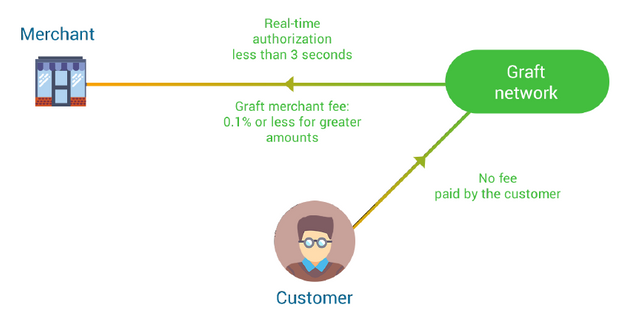
Micropayments enabled due to the low transaction fees:
GRAFT enables micropayments possible by setting low transaction fees. These low transaction fees however, do not have fixed fee components. Check out the image below that shows the GRAFT blockchain transaction fees.
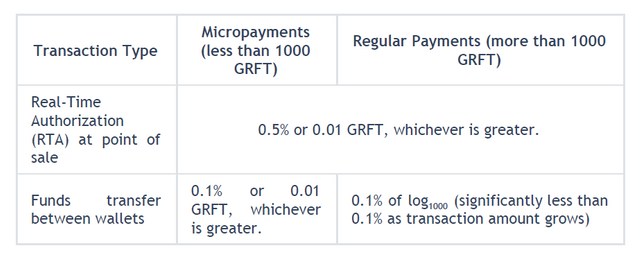
Absence of Transaction fees for buyers:
With GRAFT, buyers don’t need to worry about paying transaction fees, as all transaction fees are the responsibility of the merchants, this is the same as what is obtainable with our traditional credit payment system.
Enabling the Transfer of Funds freely between users wallet:
For a limited number of low priority slow funds transfer between user wallets, neither buyers nor merchants pay transaction fees. GRAFT is doing this so as to rival and then surpass traditional payment networks.
Variety of different payment methods, via the GRAFT’s point of sale:
GRAFT’s has an application called the Point of Sale (POS) application. With this app, merchants have the freedom to accept various cryptocurrencies, credit/debit cards and/or assets as mode of payment. This removes the need for the management of multiple wallet accounts and/or multiple POS.
Ability to perform special transactions, also via the GRAFT’s POS:
Merchants can perform multiple transaction types with GRAFT. These transaction types are not readily available for cryptocurrency. However with GRAFT, Merchants can perform this transactions. Examples of these transactions includes, pre-authorization and capture (which is required for services such as ticket booking, hotel check-in, or gas station payment) etc.
Genuine and/or authentic buyers:
Merchants can be rest assured while doing some kind of special transaction that have inherent risk via GRAFT’s platform, as Buyers need to confirm their identity in order to engage in those type of special transactions.
Ability to payout in both Fiat currency and cryptocurrencies :
With GRAFT, merchants can easily receive payout in fiat currency and/or cryptocurrencies.
Privacy, at an enviable level:
A protocol known as cryptonote takes privacy of the users of GRAFT to an enviable level. This protocol ensures that the sender’s (buyer’s) address, recipient’s (merchant’s) address, and transaction amount are all cryptographically protected and invisible. That is not all, as GRAFT also makes transaction fees invisible to public view. Now, that is privacy at an unviable level.
Seamless Integration of Cryptocurrencies:
We all know that most stores use payment terminals to handle payment. Therefore, to seamlessly integrate cryptocurrencies into our modern economy, GRAFT is going to be integrated on payment terminals. Infact GRAFT has already been able to integrate on both Verifone and Igenico payment terminals. Yes, you guessed right, existing store owners can intall a free application unto their terminals and can start accepting payment in cryptocurrencies. Ain’t this spectacular??
Check out the demo videos that flaunts the use of GRAFT on both the Verifone and Igenico terminals:
Vereifone Terminal:
Ingenico Terminal:
Transfer Funds freely between user wallets:
GRAFT is enables limited free transfers between wallets GRAFT achieves the transfer of funds freely by effectively resolving the issues associated with allowing free transfers on the blockchain.
Implementing of important business features with low efforts and costs:
This is basically an advantage for the Merchants. Recall that I made mention of the Merchant Token under the terminologies associated with GRAFT platform. Merchants can use the Merchant Token to implement important business features, albeit at low efforts and costs. Types of Merchant token includes Store credits (used for purchase returns and exchanges), Loyalty rewards, Gift Certificates, Discount coupons (the three of which attracts customers, and thus increases spending), etc.
Reputation Score:
The GRAFT network has a reputation scoring system that makes participants make well informed decisions. For example, before making authorization, merchants can take into account the buyer’s reputation score, also, before making payment for goods that can’t be delivered immediately, buyers can check the merchant’s reputation score. Also, the buyers and merchants can check the reputation score of the network super node they communicate with. Hence, participants are bound to make the right decisions.
Availability, at an impeccable level:
GRAFT has a distributed network of supernodes that are “always-on”. These supernodes ensure the availability of the network, hence client apps can communicate with these supernodes simultaneously to get authorization. In the case that, one of the sample supernodes crashes, it is automatically replaced by another supernode from the authorization sample list, and this authorization sample list is endless.
Ability to receive credits:
With GRAFT, credit consumers can be connected with credit providers. Anybody using the GRAFT wallet app can become a credit consumer. To become a credit provider, you must be using the GRAFT wallet app and you must have a positive balance. Credit providers then set the requirements needed to receive the credit, the maximum credit limit, overall maximum credit limit (when the credit consumer get credit from multiple credit providers), credit rate, and the minimum payment account and frequency.
Ability to Pay everywhere using the debit card:
The user of the mobile wallet app can pay anywhere that uses a traditional debit card, so far the traditional debit card is associated with multi cryptocurrency wallet.

GRAFT Products:
A number of GRAFT products already exists. They include:
GRAFT Mobile Wallet:
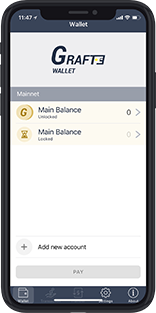
These are lite desktop, mobile and/or browser extension applications that enables the transfer of funds using GRAFT tokens, cryptographic tokens, and/or credit/debit cards. This is achieved through the GRAFT DAPI. The GRAFT Mobile Wallet is available for IOS and Android devices.
- Check out GRAFT Multicurrency Mobile Wallet App for IOS
- Check the GRAFT Multicurrency Mobile Wallet App for Andriod
GRAFT Mobile Point of Sale (POS) App:

These are lite desktop and mobile apps that allow merchants to accept payments in GRAFT tokens, cryptographic tokens, and/or major cryptocurrencies. The GRAFT Mobile POS is also available for IOS and Android devices.
GRAFT CryptoFind App:

This application makes it possible for merchants to update their status that they accept cryptocurrencies, and it also enables users to find this specific location that accepts cryptocurrencies. The GRAFT CryptoFind App is also available for IOS and Android devices.

Use-Cases:
Use-Case 1:
A shop that deals in the sales of laptops has low patronage, the shop hears about GRAFT, and then decides to create a merchant token. The shop attaches promotion rules that enables a customer to get discounts on laptop prices at a particular time of the month. Through this, the shop gets more patronage.
Use-Case 2:
Mr. John’s shop accepts the payment of cryptocurrencies, however Mr. John prefers Bitcoins. Mr. Peter is a customer that wants to patronize Mr. John, however, Mr. Peter prefers Litecoins. With GRAFT, Mr. Peter can pay with Litecoins, while Mr. John receives the settlement in Bitcoins.

Conclusion:
GRAFT intends to positively revolutionize the payment processing industry by enabling the integration of cryptocurrencies. We have seen the features which GRAFT possess, and it is glaring that with these features, cryptocurrencies would be widely used and accepted around the globe as an alternative source of payment. This in turn means that both the payment processing industry and the cryptocurrency sector will get more influx of growth and/or revenue.
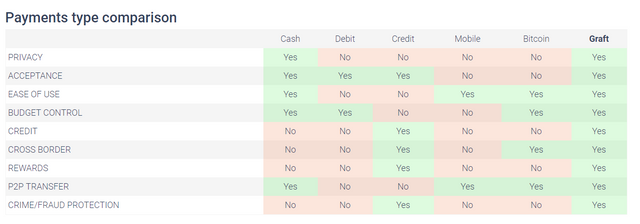
From the Image above, we see comparison between GRAFT and other payment networks, we can conveniently conclude that, with GRAFT leading the payment processing industry, our imaginations can only be our limits.

Check out this short introductory video

GRAFT’s Tokenomics:
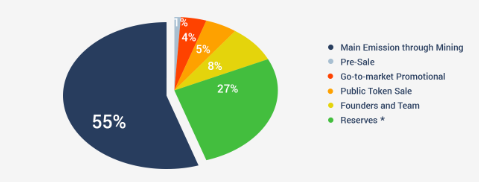

GRAFT’s Team:
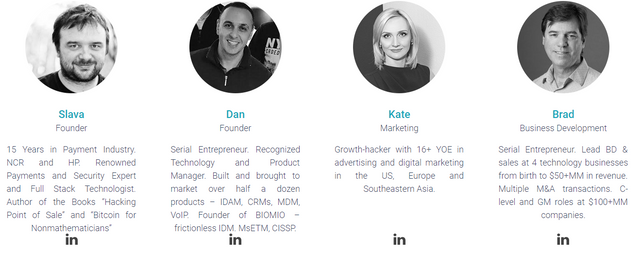

GRAFT’s Advisors:


GRAFT’s Legal and Strategy Partners:


GRAFT’s Roadmap:
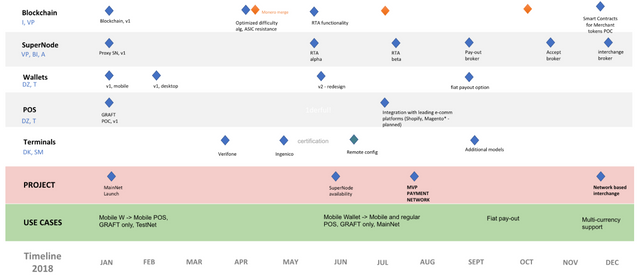

For more Resources and information, check out:
- Graft Website
- Graft WhitePaper
- Graft Telegram
- Graft Twitter
- Graft Bitcoin Talk
- Graft Facebook
- Graft Reddit
- Graft Youtube
- Graft Medium

This is an @originalworks sponsored contest

graft2018
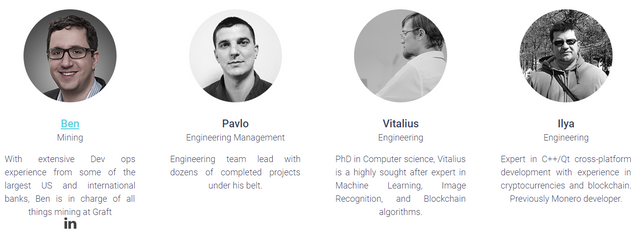
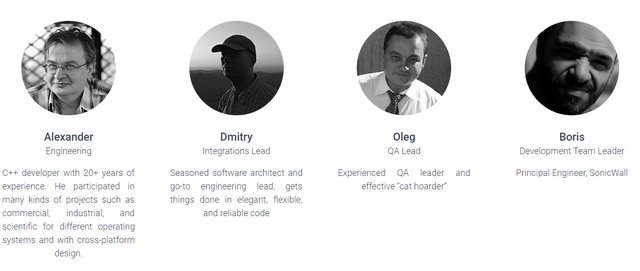
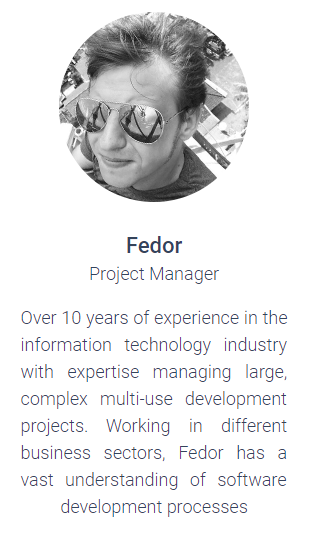
This post has been submitted for the @OriginalWorks Sponsored Writing Contest!
You can also follow @contestbot to be notified of future contests!